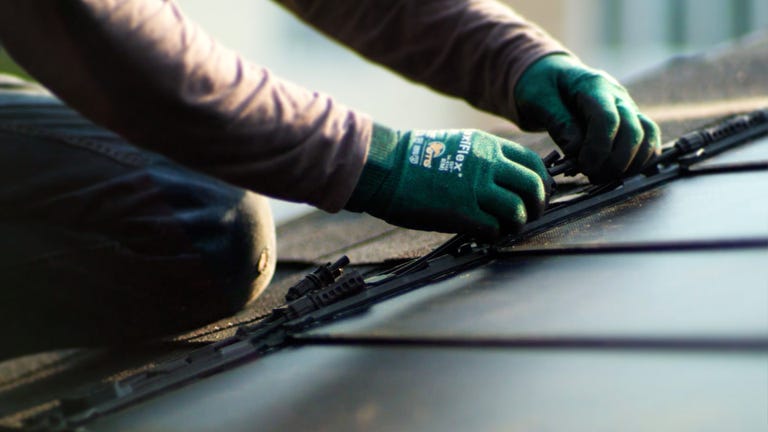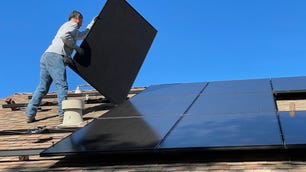The primary means of installing solar panels on your home are paying the whole cost with cash or through financing, but interest rates are rising and you may face sticker shock if you take out a loan. The Federal Reserve within the past year rapidly increased its interest rate to about 5% — the highest it’s been since September 2007. The high rates on loans may end up stymieing the solar industry overall, according to the Solar Energy Industries Association.
“While residential solar will continue its upward trajectory, it is not expected to achieve the same level of growth as it has for the last few years,” the SEIA wrote in its Solar Market Insight Report for the second quarter of 2023. “The residential solar industry grew over 28% on average over the last three years thanks to a thriving solar loan industry that depended on low-interest rates. As those interest rates have risen, business has slowed significantly.”
While higher rates may hurt the solar loan industry in the near term, homeowners might increasingly flock to the other means they can utilize to go solar: solar leases and power purchase agreements.
Below, we’ll explain how solar leasing works as well as its advantages and drawbacks (for more information on PPAs, check out this guide).
Read more: Best Solar Companies of 2023
How solar leasing works
Think of a solar lease like that of a vehicle: with both, you pay a fixed monthly fee to have access to the panels or the vehicle. Where solar leases differ are that they typically don’t have any upfront costs and the term of the lease can last anywhere from 15 to 25 years.
“The customer receives benefits from the solar array in the form of savings on their electricity bill because the on-site solar production is reducing the amount of electricity they buy from their local utility,” said Corey Ramsden, vice president of Go Solar Programs at the nonprofit Solar United Neighbors. “A lease may include an option for the homeowner to purchase the system outright later in the contract term.”

Watch this: New Solar Shingles You May Not Even Notice
The key differences between a solar lease and purchasing a solar system are around ownership. When you buy panels, you become their owner. With a lease, ownership is retained by the company that installed them. Therefore, you won’t get any tax credits.
“In this model, the company that owns the solar array will retain the federal tax credit and any other available local incentives and share some of that related savings with the customer,” Ramsden said.
What happens once the solar panels are installed?
Here’s the nice thing about solar leases: really all the homeowner has to do is apply, sign a contract and pay the monthly lease. The installing company handles every other aspect, from the installation to the maintenance.
“The leasing company or their designated maintenance partner is responsible for all maintenance on the solar array as part of the monthly leasing costs the customer pays,” Ramsden says. “The homeowner typically has access to monitoring software to see if the system is producing electricity.”
To be clear: depending on the size of the solar system, you may still have a balance on your electric bill, so you could be paying for both the monthly lease and your energy bill. Practically, though, your energy bills should be significantly reduced.
Solar leasing pros and cons
Here are the main benefits of a solar lease.
- There are no upfront costs, just one monthly payment that may increase over time due to escalators built into the contract.
- Installation and maintenance is handled by the installing company, so the homeowner doesn’t have to worry about it.
- Solar leases can be an affordable way to save on energy bills. Your lease amount will be predictable, even if it does go up, whereas energy bills increase based on use, rate hikes and other factors including inflation.
Here are the main drawbacks of a solar lease.
- You won’t own the system that is installed on your home, so you won’t get the tax credits or other benefits of solar, including higher home resale values.
- You may have to pay both the monthly lease as well as an energy bill certain months, based on your usage or lower solar energy production.
- Solar leases are not allowed in every state.
Jump-start your solar journey by exploring Home Equity & HELOC rates from multiple lenders
How much do solar leases cost?
Roughly, a solar lease will cost between $50 and $250 a month, based on a few factors, including the size of the system and where you live.
“The most important thing is that your annual lease payment costs and your utility bill costs are lower than what you used to pay annually for electricity,” Ramsden said. That depends on your solar lease costs and electricity costs. Both of those can increase over time: leases via fixed escalators laid out in the contract and electricity costs via rate hikes.
Solar leases vs. power purchase agreements
Both solar leases and PPAs are low barrier ways for homeowners to go solar, but there is one major difference between the two.
“The arrangements are very similar in that they are both owned and operated by a third party and that the customer pays nothing upfront,” Ramsden said. “For a lease, the customer pays a fixed monthly payment, and a power purchase agreement charges you by the kilowatt-hour the solar array produces.”
Essentially, you’re paying for the equipment itself with a solar lease, whereas with a PPA, you’re paying for the energy the system creates. One thing both do have in common: They’re not available in every state.
Frequently asked questions
Which is better: Buying or leasing solar panels?
If you have the financial means, buying a solar panel system outright will always be better. Because you’ll own the system yourself, you’ll get all the benefits that come with solar, such as any tax credits and a boost to your home’s value. In short, you’ll save more money in the long run when you buy a system outright.
Is leasing solar panels worth it?
It could be, but there are a lot of factors to consider. Most importantly is the cost you’re currently paying for electricity as well as how much the monthly cost of a lease may be. If a leased system can shave a significant amount off your energy bills — more than the cost of the lease itself at least — a solar lease can be a good deal. And, hey, you’re helping the planet too!
What is a power purchase agreement?
A power purchase agreement is a mechanism to get the benefits of solar without buying a system yourself. Under a PPA, a company will install panels atop your home then charge you a fixed cost per kilowatt-hour the panels produce. If that price is below what your utility charges, you’ll save money.





















+ There are no comments
Add yours